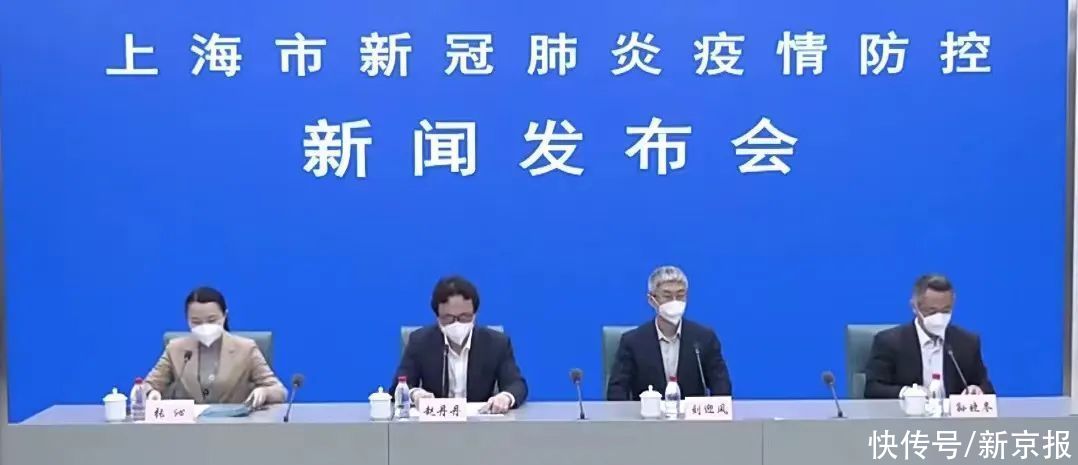On the morning of April 26, Shanghai held a press conference on the prevention and control of the new crown pneumonia epidemic to introduce the latest situation of epidemic prevention and control.

According to Zhao Dandan, deputy director of the Shanghai Municipal Health Commission, on April 25, 52 new local deaths were reported, with an average age of 81.13 years old and the youngest age 33 years old, the oldest is 100 years old, The 33-year-old patient was a male. He died of sudden cardiac and respiratory arrest and was diagnosed as sudden cardiac death. He had received two doses of the new coronavirus vaccine.
According to reports, As of April 25, there were 190 deaths in Shanghai, the youngest was 33 years old, the oldest was 101 years old, and the average age was 82.52 years old. Among the 190 cases, 2 were aged 31-40, 2 were aged 41-50, 6 were aged 51-60, 16 were aged 61-70, 38 were aged 71-80, and 79 were aged 81-90 , 46 cases aged 91-100 years, 1 case aged 101 years and above. According to statistics, 86.32% of the total deaths were over 70 years old. Except for 1 case of sudden cardiac death, the other causes of death were underlying diseases. Twelve of the deaths had been vaccinated against the new crown pneumonia virus, and the rest were not vaccinated against the new crown pneumonia virus.
On April 25, 1,941 local cases in Shanghai were discharged from hospital
According to reports, on April 25, 1,941 local confirmed cases in Shanghai were discharged from hospital, and none were discharged. 12,871 cases of symptom-infected patients have been released from centralized isolation and medical observation. They will return to their places of residence for health monitoring, and the community is requested to properly do a good job in picking them up.
Shanghai: Strictly implement “non-essential not leaving Shanghai” to resolutely prevent the spread of the epidemic
According to introduction: Shanghai strictly implements “non-essential not leaving Shanghai”, and takes various measures to prevent the spread of the epidemic. These measures are strictly controlled to manage the departure of personnel from Shanghai, and resolutely prevent the spillover of the epidemic.
First, in addition to a negative nucleic acid test certificate within 48 hours, those leaving Shanghai must also provide a negative antigen test certificate within 24 hours; Do a good job of relevant inspections and minimize the output of risk personnel.
Secondly, for close contacts, sub-close contacts and other high-risk persons who have been to other places found in the convection investigation, the Municipal Center for Disease Control and Prevention will issue a letter of cross-regional assistance to each region in a timely manner, and include them in the territory of the local disease control department management; further strengthen the work docking, information sharing and coordination with brother provinces and cities.
The third is to further implement the main responsibility of preventing spillovers, strengthen the epidemic prevention and control of key groups leaving Shanghai, such as shelter construction personnel, truck drivers, nucleic acid sampling personnel, and other stranded personnel in Shanghai, and strictly close the loop. Transfer, strict evacuation and resettlement.
The latest data on the epidemic in Shanghai
According to the Shanghai Municipal Health Commission: From 0 to 24:00 on April 25, 2022, new local There are 1,661 confirmed cases of new coronary pneumonia and 15,319 asymptomatic infections, of which 968 confirmed cases are the results of previously asymptomatic infections, 675 confirmed cases and 15,120 asymptomatic infections were found in isolation and control, and the rest Found in the investigation of relevant risk groups.
From 0 to 24:00 on April 25, 2022, 52 new local deaths were reported. The average age is 83.1 years old, the youngest is 33 years old, and the oldest is 100 years old. The 52 patients were all complicated with multi-organ underlying diseases, including advanced liver tumor, chronic obstructive pulmonary disease, acute coronary syndrome, hypertension grade 3 (very high risk), diabetes, sequelae of cerebral infarction, Parkinson’s disease, Alzheimer’s disease Serious diseases of important organs such as mutism and uremia. After the patient was admitted to the hospital, the primary disease progressed rapidly, and the patient died after resuscitation failed. The immediate cause of death is the underlying disease.
Source: CCTV News Client Shanghai Release